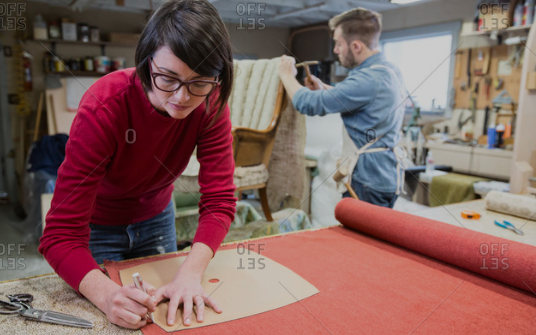
Furniture upholstery is an age-old craft that has evolved over centuries, seamlessly blending functionality with aesthetics. In this comprehensive exploration, we delve into the world of the furniture upholsterer – a skilled artisan who transforms ordinary pieces into masterpieces through the artful application of fabrics, padding, and a deep understanding of design. From historical roots to modern-day techniques, this narrative spans the breadth of the furniture upholstery profession.
I. Historical Evolution:
- Ancient Beginnings: a. The roots of upholstery trace back to ancient civilizations, where textiles were used to enhance the comfort and appearance of furniture. b. Early techniques involved using straw, horsehair, and fabric to create rudimentary forms of upholstery.
- Renaissance Era: a. Upholstery gained prominence during the Renaissance, with luxurious fabrics and intricate designs adorning furniture for royalty and nobility. b. Skilled craftsmen emerged, establishing the foundation for the specialized profession of the furniture upholsterer.
- Industrial Revolution: a. Mass production and technological advancements during the Industrial Revolution revolutionized the upholstery process. b. The shift from handcrafted to machine-made upholstery brought challenges and opportunities for the evolving profession.
II. The Craftsmanship of Furniture Upholsterers:
- Essential Skills: a. Furniture upholsterers require a blend of artistic creativity, manual dexterity, and a keen understanding of materials. b. Expertise in pattern making, sewing, and precision cutting is fundamental to achieving impeccable results.
- Materials and Tools: a. An in-depth look at the various materials used in upholstery, including fabrics, padding, springs, and webbing. b. Specialized tools such as shears, staple guns, and sewing machines play a crucial role in the upholsterer’s toolkit.
III. Design Principles:
- Ergonomics: a. The significance of ergonomics in furniture upholstery, ensuring that comfort and functionality are seamlessly integrated into the design. b. How upholsterers collaborate with designers and architects to create pieces that harmonize with the overall aesthetic.
- Style and Trends: a. Exploration of historical and contemporary design styles that influence the choices of furniture upholsterers. b. The cyclical nature of trends and the importance of staying informed about current design movements.
IV. The Upholstery Process:
- Assessment and Planning: a. Preliminary steps involved in evaluating the condition of furniture and determining the scope of the upholstery project. b. Collaborative consultations with clients to understand their preferences and vision.
- Stripping and Repair: a. Detailed explanation of the process of removing existing upholstery and assessing the structural integrity of the furniture. b. Techniques for repairing frames, springs, and padding to ensure a solid foundation.
- Fabric Selection and Cutting: a. The significance of choosing the right fabric based on durability, aesthetics, and client preferences. b. Precision cutting and pattern matching to achieve a seamless and visually appealing result.
- Upholstery Techniques: a. A comprehensive overview of various upholstery techniques, including tufting, piping, and stitching. b. Step-by-step guide through the hands-on process of applying fabric to the furniture frame.
V. Challenges and Innovations:
- Upholstery Challenges: a. Common challenges faced by furniture upholsterers, such as handling unconventional shapes and addressing structural issues. b. Strategies for troubleshooting and problem-solving during the upholstery process.
- Technological Advancements: a. The impact of technology on the furniture upholstery industry, from computer-aided design (CAD) to advanced sewing machines. b. Innovations in materials, such as eco-friendly and sustainable options, shaping the future of upholstery.
VI. Business and Sustainability:
- Entrepreneurship in Upholstery: a. Exploring the entrepreneurial side of furniture upholstery, including setting up a workshop, marketing, and client management. b. Challenges and rewards of running an upholstery business in a competitive market.
- Sustainable Practices: a. The growing importance of sustainability in the upholstery industry, with a focus on eco-friendly materials and ethical business practices. b. Initiatives and certifications that promote environmental responsibility within the upholstery community.
Conclusion:
In conclusion, the furniture upholsterer is a custodian of tradition and an innovator in design. This exploration has taken us through the historical roots, craftsmanship, design principles, and challenges faced by these skilled artisans. As the industry continues to evolve, the furniture upholsterer remains a vital link between the past and the future, ensuring that each piece of furniture tells a story of artistry and functionality.







